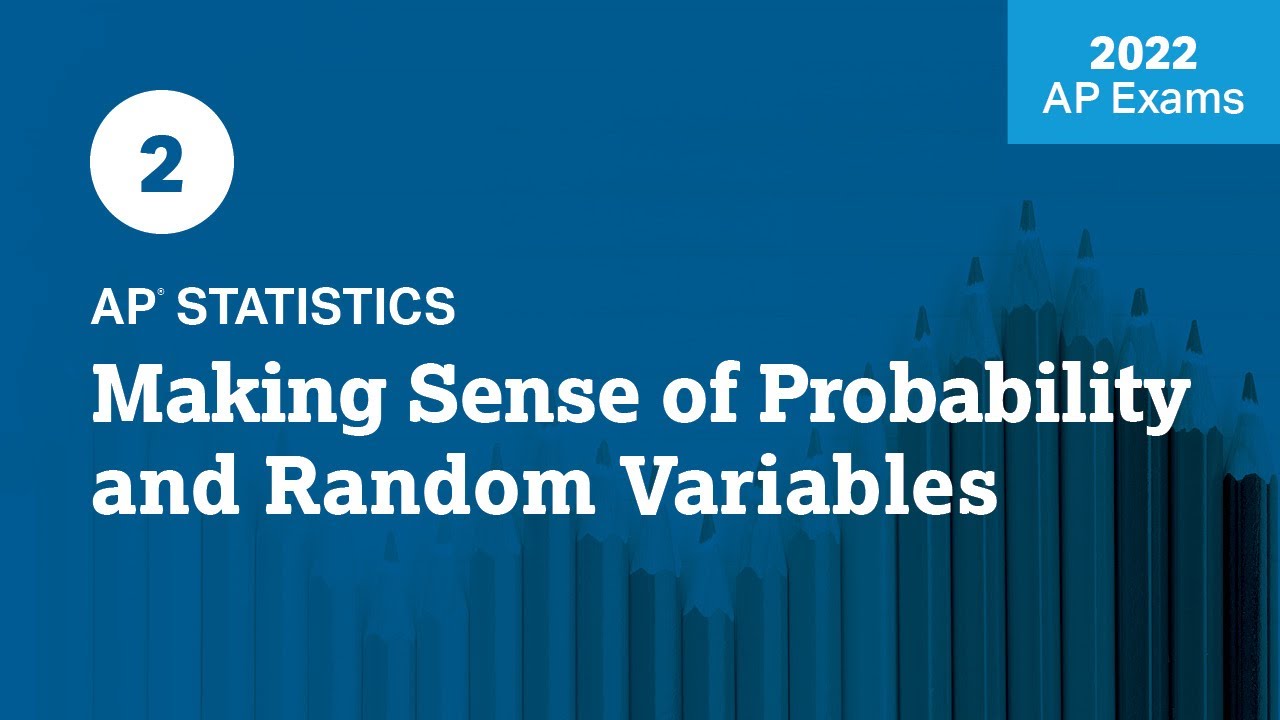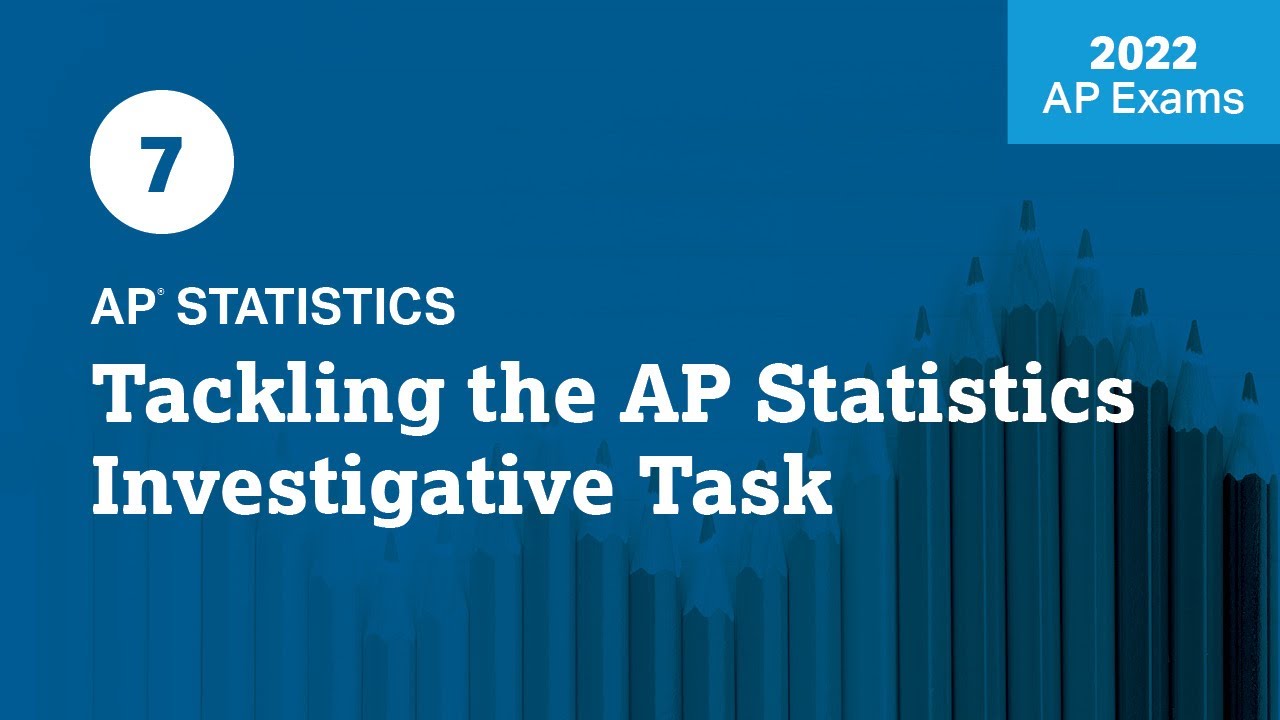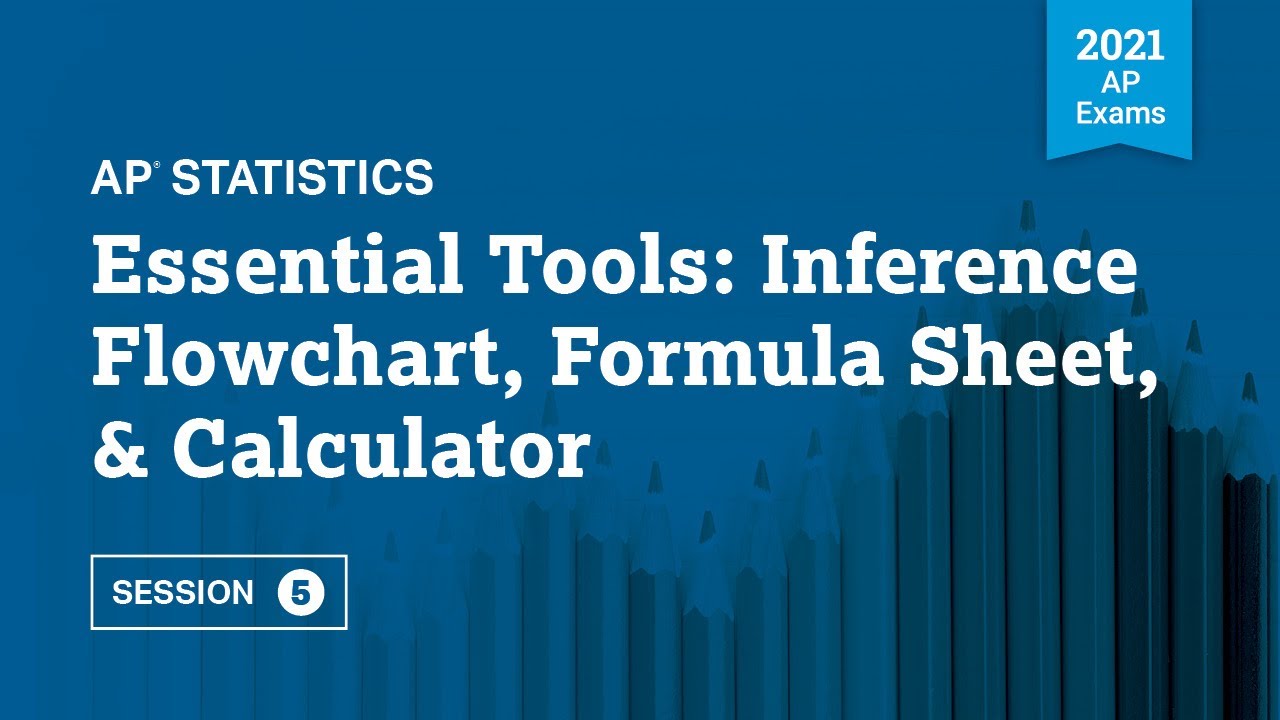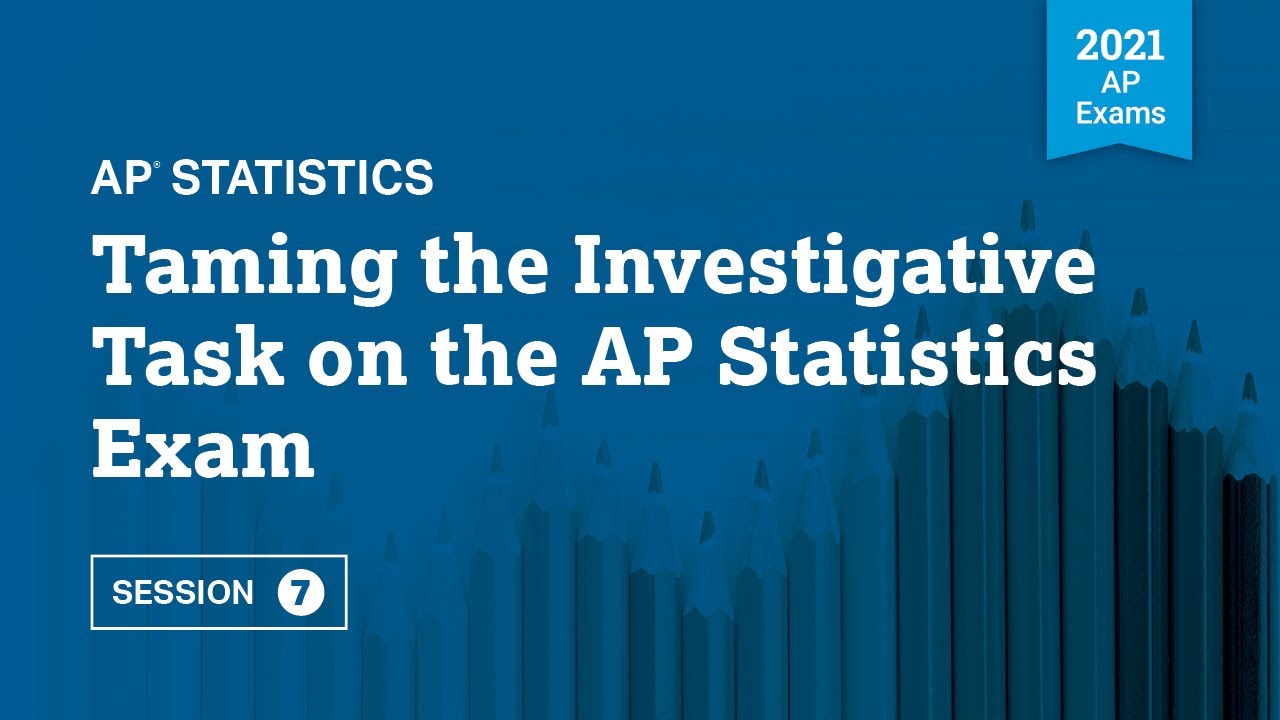2021 Live Review 1 | AP Statistics | How to Explore and Collect Data
TLDRIn this video, Luke Wilcox and Darren Starnes guide students through AP Statistics exam preparation, emphasizing the importance of focused study in the final weeks. They introduce their eight-session review plan, covering content simplification, exam strategies, and confidence building. The session includes analyzing normal distributions, z-scores, sampling methods, experimental design, and interpreting regression output. Strategies for exam success and comparative analysis of distributions are discussed, aiming to enhance students' understanding and performance.
Takeaways
- 📚 The AP exam score heavily depends on the effort put in the weeks leading up to the exam, regardless of the student's past performance or teaching conditions.
- 👨🏫 Luke Wilcox and Darren Starnes, both experienced AP Statistics teachers and exam graders, will be conducting the review sessions to share their expertise.
- 🎯 The review sessions aim to simplify challenging AP Statistics content, share strategies for exam success, and build students' confidence through practice with real AP questions.
- 📈 The structure of the review sessions includes an initial focus on content understanding followed by exam preparation strategies, with specific sessions dedicated to different aspects of the AP exam.
- 🔍 Emphasis is placed on active reading of questions and engaging with the material to better understand and retain information.
- ✍️ Students are encouraged to submit their answers to practice questions through a Google form for real-time feedback and discussion.
- 📉 The review covers how to interpret data from normal distributions, including the use of z-scores and standard deviation, which is crucial for understanding various statistical concepts.
- 📝 Understanding different sampling methods and experimental designs is essential, as these concepts are integral to conducting and interpreting statistical analyses.
- 📊 Interpreting slope from regression analysis output is a common topic on the AP exam, requiring students to grasp the concept of how change in one variable affects another.
- 🗂 When comparing distributions, students must consider shape, outliers, center, and variability (S.A.K.V.I.), and use comparative language to describe differences or similarities.
- 💻 The importance of context is highlighted for both multiple-choice and free-response questions, as it aids in understanding the significance of the data and results.
Q & A
What is the main focus of the AP Daily Live Review for AP Statistics sessions?
-The main focus of the sessions is to simplify challenging content in AP Statistics using practice questions from old AP exams, share strategies for AP exam success based on years of teaching and grading experience, and build students' confidence leading up to the AP exam.
Who are the instructors for the AP Daily Live Review for AP Statistics sessions?
-The instructors are Luke Wilcox, a teacher at East Kentwood High School in Michigan with 20 years of teaching experience and 16 years of teaching AP Statistics, and Darren Starnes, who has been teaching AP Statistics since 1996 and has been an AP exam reader since 1998.
What is the structure of the AP Daily Live Review sessions for the first week?
-The first week focuses on content with the first four sessions. Each session covers challenging content and critical skills for different units of AP Statistics, starting with data collection and exploration, followed by probability, random variables, sampling distributions, inference for categorical data, and inference for quantitative data.
What is the purpose of the handouts provided for each session?
-The handouts provide supplementary material for each session, including practice questions, formulas, and tables that will be provided on the AP exam to assist students in understanding and practicing the content covered during the sessions.
How can students submit their answers and participate interactively during the live review sessions?
-Students can submit their answers and participate interactively through Google Forms linked in the session handouts or provided in the video description. The instructors can see the responses in real-time and use them to guide their explanations.
What is the significance of the z-score in the context of the AP Statistics exam?
-The z-score is used to standardize scores and indicate how many standard deviations a value is from the mean in a normal distribution. It is a key concept in understanding various statistical analyses and is often used in AP exam questions.
How does the讲师handle the process of selecting the correct answer for multiple-choice questions during the review sessions?
-The讲师first reads the question, gives students time to submit their answers via Google Form, and then reviews the responses received. Afterward, they analyze the question, eliminate incorrect answers based on the content, and provide a detailed explanation of the correct answer.
What is the importance of the formula sheet and tables provided for the AP Statistics exam?
-The formula sheet and tables are essential tools provided to students during the AP exam. They contain all the necessary formulas and statistical tables, such as Table A for z-scores, that students need to solve problems without having to memorize them.
Why is it important for students to understand the different sampling methods discussed in the script?
-Understanding different sampling methods is crucial as it allows students to correctly identify and analyze the representativeness and potential biases in statistical samples, which is a fundamental concept in AP Statistics.
What is the role of the experimental unit in an experiment, and why is it important?
-The experimental unit is the individual element or group of elements that receives the treatment in an experiment. It is important because it determines the level at which the experiment is conducted and the conclusions that can be drawn from the results.
How can students estimate the median from a histogram, as discussed in the script?
-Students can estimate the median by identifying the middle value or the average of the two middle values in an ordered list of data. In the context of the script, this involves adding up the frequencies of the histogram bars until reaching the total number of data points that corresponds to the median position.
What are the key components to include when comparing distributions of quantitative data in AP Statistics?
-The key components to include are shape, outliers, center, and variability. Additionally, context and comparative language should be used to clearly describe the differences or similarities between the distributions.
Why is it important to include context when answering free response questions on the AP Statistics exam?
-Including context helps clarify what the data represents and why the statistical analysis is meaningful. It shows an understanding of the real-world application of the statistics and is often a requirement in the AP exam rubrics.
What strategies are suggested for success on the AP Statistics exam?
-Strategies include active reading of questions, eliminating obvious incorrect answers, reading all answer choices, understanding what is needed for full credit on free response questions, and always including context in responses.
How does the讲师encourage students to provide feedback after the session?
-The讲师asks students to provide feedback through a link provided in the session handouts or video description. They express interest in knowing what worked and what didn't, and encourage students to give a thumbs up on YouTube to help spread the word about the review sessions.
Outlines
📚 AP Statistics Exam Preparation
The paragraph introduces an AP Statistics review course with a focus on exam preparation. Luke Wilcox, a teacher at East Kentwood High School, and Darren Starnes, an experienced AP Statistics educator, will guide students through challenging content using practice questions from past AP exams. The course aims to simplify complex topics, share strategies for exam success, and build students' confidence over eight interactive sessions.
📘 Logistics and Session Structure
This section outlines the logistics of the AP Statistics review sessions, including the availability of handouts and formula sheets from a provided URL. It also explains the structure of the sessions, which will involve analyzing multiple-choice and free-response questions from past AP exams. The instructor encourages students to submit their answers through a Google form for real-time feedback and interaction.
📊 Interpreting Normal Distributions and Percentiles
The instructor discusses how to approach a multiple-choice question about the diameters of oranges distributed normally. The explanation includes understanding the concept of percentiles, using a normal distribution curve, and consulting a z-score table to find the relationship between the diameter at the 67th percentile and the mean diameter. The correct answer is identified through the analysis.
🐋 Comparing Whale Weights and Z-Scores
The paragraph presents a question involving the weights of gray and humpback whales, distributed normally with different means and standard deviations. The task is to find the weight of a humpback whale that has the same standardized weight z-score as a 24,000 kg gray whale. The solution involves calculating the z-score for the given gray whale and finding the corresponding weight for the humpback whale that shares this z-score.
📝 Understanding Sampling Methods
The focus is on identifying the correct sampling method used in a high school survey about after-school activities. The paragraph eliminates incorrect sampling methods such as convenience and systematic sampling, and discusses the differences between cluster, stratified random, and simple random sampling. The correct answer, stratified random sampling, is deduced by considering the homogeneous groups within each class year.
📉 Analyzing Linear Regression Output
This section deals with interpreting the results of a linear regression analysis from computer output. The instructor explains the significance of the slope in the regression equation, which represents the predicted change in zinc concentration for a one-unit change in lead concentration. The correct interpretation of the slope is identified among multiple-choice options, emphasizing the importance of understanding how variables relate in the context of the study.
🧴 Experiment Design for Laundry Detergents
The paragraph describes an experiment where a manager compares two laundry detergents by randomly assigning loads of towels to be washed with either detergent A or B. The cleanliness is rated by an unbiased judge. The discussion revolves around identifying the correct experimental design, which is a completely randomized design, and distinguishing it from other designs such as block or matched pairs.
📈 Estimating Medians and Comparing Distributions
The instructor guides students through estimating median PT (pupil-teacher) ratios from histograms for states west and east of the Mississippi River. The process involves adding the frequencies of the histogram bars to find the median positions. The paragraph also covers comparing the distributions of the two groups, considering factors like shape, center, and variability, and the importance of using comparative language.
📊 Mean Comparison and Session Summary
The final part of the session involves predicting the comparison of mean PT ratios for the two groups of states based on the distributions' shapes and medians. The instructor explains that the mean for the west, skewed to the right, will be higher than the median, while for the east, with a symmetric distribution, the mean will be close to the median. The session concludes with a summary of the key points covered and a call for student feedback.
Mindmap
Keywords
💡AP Exam
💡Percentile
💡Normal Distribution
💡Z-Score
💡Stratified Random Sample
💡Slope
💡Median
💡Histogram
💡Comparative Language
💡Context
💡Completely Randomized Design
Highlights
The importance of hard work in the weeks leading up to the AP exam for achieving a good score, regardless of in-person, virtual, or combined learning experiences during the school year.
Introduction of Luke Wilcox, a teacher with 20 years of experience and an AP exam grader, who will be conducting the AP Statistics review sessions.
Darren Starnes' introduction as an experienced AP Statistics teacher since 1996 and his role in finalizing scoring guidelines for free response questions.
The three main goals of the review sessions: simplify challenging content, share strategies for AP exam success, and build student confidence.
The structure of the eight review sessions, focusing on content in the first four sessions and exam preparation in the last four.
Availability of handouts, formula sheets, and tables for the AP exam provided through a specific URL.
The interactive nature of the review sessions, with real-time student participation through Google Forms for answering practice questions.
Explanation of how to approach multiple-choice questions on the AP exam, including active reading and using provided tables for z-scores.
The correct interpretation of a z-score in the context of a normal distribution and its application to a sample question.
Strategies for identifying and eliminating incorrect answer choices in multiple-choice questions.
The process of estimating median values from histograms and applying this method to data from states west and east of the Mississippi.
Comparing distributions using the acronym SOCKV (Shape, Outliers, Center, Variability) plus context and comparative language.
Interpreting slope in the context of a linear regression analysis and its significance in predicting changes in variables.
The distinction between different sampling methods, including simple random sample, stratified random sample, and cluster sample.
Understanding experimental design, including completely randomized design and block design, and their application to real-world scenarios.
The significance of feedback for improving the review sessions and the request for student input to enhance future sessions.
Transcripts
Browse More Related Video

2022 Live Review 1 | AP Statistics | Making Sense of Collecting and Exploring Data

2022 Live Review 2 | AP Statistics | Making Sense of Probability & Random Variables

2021 Live Review 8 | AP Statistics | Top 10 Tips for Success on the AP Statistics Exam

2022 Live Review 7 | AP Statistics | Tackling the AP Statistics Investigative Task

2021 Live Review 5 | AP Statistics | Essential Tools Inference Flowchart, Formula Sheet & Calculator

2021 Live Review 7 | AP Statistics | Taming the Investigative Task on the AP Statistics Exam
5.0 / 5 (0 votes)
Thanks for rating: